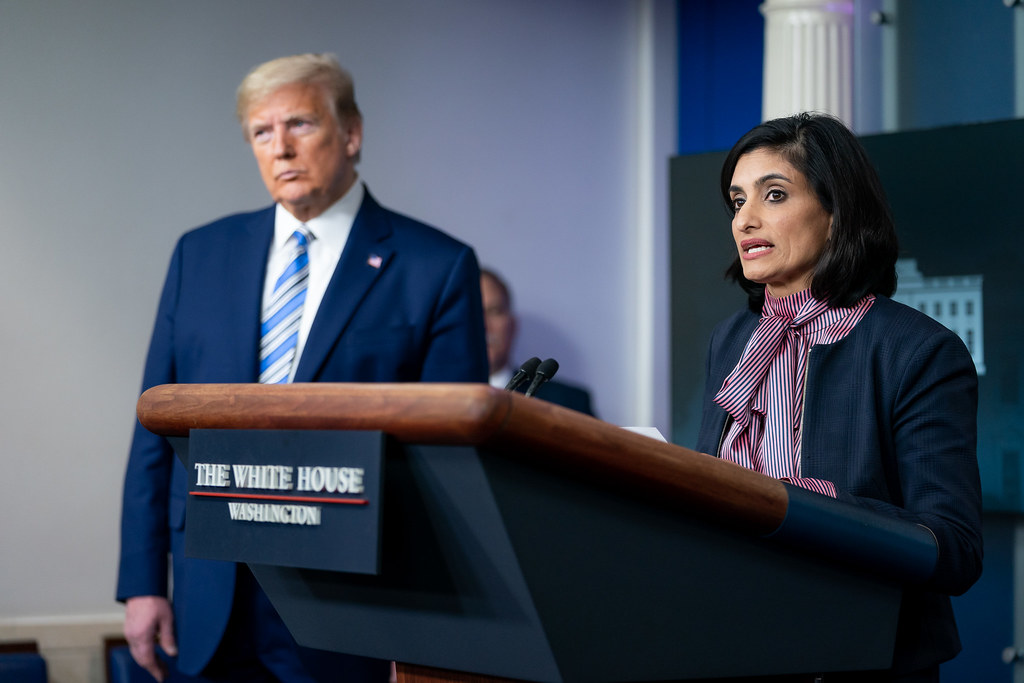 |
| Seema Verma and Donald Trump. |
Indiana expanded Medicaid when Mike Pence was governor.
I know, I know. But it’s not quite as out-of-character as one thinks for the archconservative and Trump-co-conspirator when one considers how they did it: by creating a complicated demonstration project that requires participants to pay a monthly premium into the state’s Medicaid program. The payments are on a sliding scale, but about half of the new enrollees under the Medicaid Expansion pay just $1 a month. So what’s the point?
The point, as then-Gov. Pence sold it, was the idea that if poor people had ‘skin in the game,’ even if that skin is nominal, they would make better use of what they are paying for. I could launch into a long explanation, but suffice it to say that the logic is rooted in the bigoted idea that the poor people are poor, by and large, because of choices they made rather than systemic failures and that therefore, all that it takes for one to be lifted out of poverty is better decision making, which can in turn be incentivized by making them put “skin in the game.”
Under the Affordable Care Act, though, if a state is going to tinker with programs funded almost entirely by federal money, they need to make a case that their outcomes will be better than under the existing, default program. That’s what Mike Pence and Indiana’s legislature told the federal government their plan would do when they asked for and were granted a waiver.
So, how did it go? Did it work?
Of course not. A federally commissioned study shows that Indiana’s program failed to show any improvements in health status or health outcome for low-income Indianans compared to states that expanded Medicaid the traditional way, or even from states that didn’t expand Medicaid at all. It did increase coverage, as any expansion of Medicaid would.
When Indiana took up the Medicaid expansion under Obamacare, its insured rate jumped from 79% to 89%, but thanks to the complex, bone-headed nature of Pence’s experiment, health behavior and outcomes failed to keep track. Those getting an annual check-up increased by less than 5 percentage points, and the share of people who had unmet medical needs fell by just 2 points. The rate of flu vaccinations actually fell along with the implementation of the Indiana experiment.
Womp, womp.
Since their experiment was a flop, the federal government is now free to pull their ‘demonstration’ exemption, right? Not quite.
It turns out that the Center for Medicare and Medicaid Services, then under the management of Trump-appointee Seema Verma - who was also Gov. Pence’s chief health care consultant and shaped Indiana’s brilliant flop in the first place - extended Indiana’s waiver for 10 years in October.
That extension, though, may not have been dumb luck or a lucky a guess. The damaging report was released on Nov. 30, in the midst of election chaos caused by the defeated Donald Trump, but sources told Kaiser Health News that Verma’s CMS had a draft of the report for a year before releasing it. In other words, at the time Indiana’s ‘demonstration’ waiver was extended for 10 years, CMS - and the two top architects of Indiana's Pay-for-Medicaid scheme - knew the extension was unwarranted but granted it anyway.
A revocation, or at least an investigation by the Inspector General of Health and Human Services, is likely warranted.
